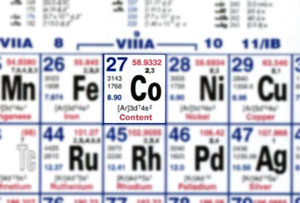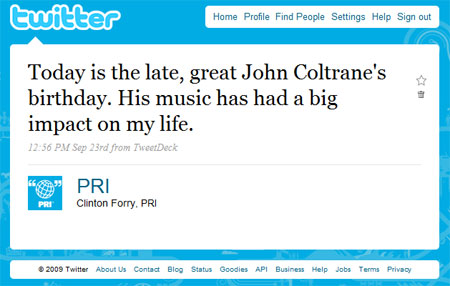A couple of weeks ago the Geek Girls Guide featured a post about the relatively new and inevitable phenomenon of “Good Enough.” Sometimes the answer to a need is less about the most-est and more about the most well-suited. The example is the handy Flip camera — not the most sophisticated or high-tech, hi-res device. But, it is good enough for most people. (myself included.)
Content creators and publishers enjoy a luxury that the hardware and device manufacturers do not: the flexibility of multiple versions of content. This concept can apply to many different kinds of content: feeds, documents, or other file types. It also applies to variations of those, like resolution and format.
Enter the stadium of rock-n-roll content resolution. Radiohead guitarist Johnny Greenwood and Nine Inch Nails founder Trent Reznor have opposing viewpoints on “Good Enough.” They shared their views in a recent set of “New Yorker” articles.
Greenwood argues that average mp3 files are fine:
We had a few complaints that the MP3s of our last record wasn’t encoded at a high enough rate. Some even suggested we should have used FLACs, but if you even know what one of those is, and have strong opinions on them, you’re already lost to the world of high fidelity and have probably spent far too much money on your speaker-stands.
Reznor on the other hand, argues:
Walk into a Best Buy and everyone’s obsessed with the highest possible resolution for their TVs. 1080p versus 1080i resolution, hundred-dollar HDMI video cables…yet everyone still walks around with those terrible quality white iPod ‘earbuds’…I want you to have the same feeling I do sitting in the studio listening to a final mix, surrounded by sound, in heaven.
There are two clearly different attitudes here.
The first looks at the way things are. Why go to much trouble if most people are going to take the low-resolution road anyway? The second looks more at the way things could be. Offer the high-resolution experience, but offer convenience as well.
This gets to the core of the issue: the user experience.
Lots of folks are happy with average-quality resolution mp3s. But what of the people that are looking for a better user experience?
Radiohead put their most recent full-length album up for pay-what-you-like downloading. But, they used mediocre-quality mp3s: 160kbps. The album, titled “In Rainbows,” was eventually released on CD and vinyl LP.
Reznor, however, released a recent album, “Ghosts,” in a much different way. Five different ways, in fact:
- First 9 tracks in high-quality 320kbps mp3 – FREE
- All 36 tracks, in one of three hi-res formats – $5
- 2-CD set, with access to above downloads – $10
- Above, plus data DVD with files for remixing, plus Blu-Ray ultra-fidelity version and hardcover book – $75
- Above, plus the album on 4-LPs and Reznor’s autograph, limited to 2,500 – $300 [sold out]
You can easily give people too many choices. Reznor didn’t release the album on cassette or 8-Track. [Even though some people would likely have bought them.] However, he did release it in a way that offered people a variety of attractive, relevant choices.
Consider the option of multiple versions early in the analysis phase. Know the client, know the audience. Keep the design and interface clean. Clearly explain what is available. People want choices, but not to be overwhelmed.
People that choose their own version of “Good Enough” will think your company is more than just good enough. They may think it is awesome, even.








